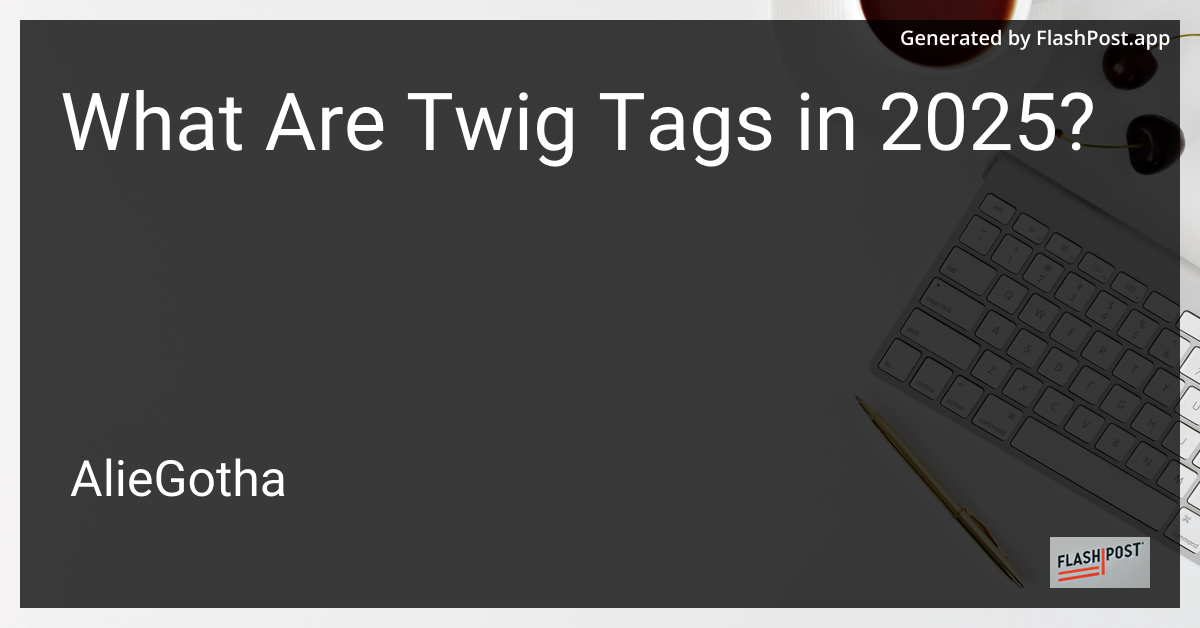

What Are Twig Tags in 2025?
As we navigate through 2025, web development continues to embrace powerful templating engines that enhance productivity and performance. One such engine is Twig, which remains a favorite among developers using PHP frameworks. Twig’s robust templating engine is renowned for its clean syntax and flexibility, and at the core of its functionality are Twig tags. But what exactly are Twig tags, and how can they benefit your projects? This article explores the essential aspects of Twig tags and their applications.
Understanding Twig Tags in 2025
Twig tags are the backbone of Twig’s templating system, enabling developers to execute functions, display control structures, and extend templates. They are usually enclosed within {% %} delimiters, and with the ever-evolving web technology landscape, Twig tags remain a vital feature for creating dynamic, easy-to-manage HTML templates.
Different Types of Twig Tags
Twig tags are diverse, each serving specialized purposes. Here are some key categories:
-
Control Structures
{% if %}/{% endif %}: Basic conditional statements that allow you to execute code based on certain conditions.{% for %}/{% endfor %}: Looping structure to iterate over arrays or elements.
-
Variable Assignment and Operations
{% set %}: Allows you to assign a value to a variable.{% do %}: Executes an action without displaying any output.
-
Template Inheritance
{% extends %}: Inherit a base template to promote DRY (Don’t Repeat Yourself) principles.{% block %}/{% endblock %}: Define blocks within templates that child templates can override.
-
Include and Embed
{% include %}: Embed another template and include its content.{% embed %}: Similar to include but allows for overriding blocks in the embedded template.
Advantages of Twig Tags
- Readability and Maintainability: The clear syntax of Twig tags makes HTML templates easier to read and maintain.
- Reusability: Twig supports template inheritance, promoting code reusability and reducing redundancy.
- Security: Twig automatically escapes variables to prevent XSS attacks, enhancing the security of your applications.
Troubleshooting Common Twig Errors
Despite their advantages, developers may face challenges when using Twig, especially with errors like Twig\Error\LoaderError. If you encounter such issues, here are some resources to help you troubleshoot:
- How to Solve Twig LoaderError in CodeIgniter: A comprehensive guide for resolving LoaderError in CodeIgniter setups.
- Twig Form_Errors Override: A forum discussion focusing on overriding form errors in Symfony projects.
- Twig\Error\LoaderError Solutions: An alternative resource tackling LoaderError issues.
Conclusion
Twig tags continue to be an essential tool for developing efficient, dynamic, and secure web applications in 2025. With their ability to streamline templates and empower developers, understanding and leveraging these tags can significantly improve development workflow. By staying informed on troubleshooting and best practices, developers can maximize the potential of Twig in their projects. Happy templating!
This SEO-optimized article is formatted in Markdown and incorporates relevant links to assist with common Twig errors, ensuring readability and engagement.